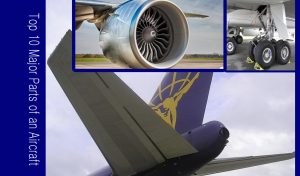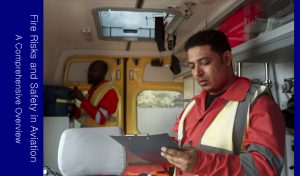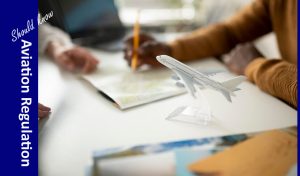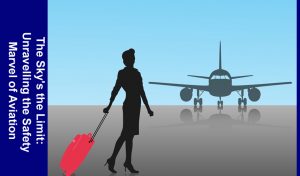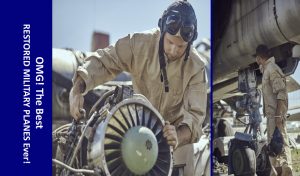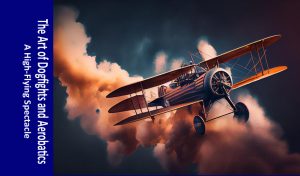The future of aerobatics with its Technology and Trends is bright, with many new technologies and trends emerging that will push the boundaries of what is possible.
One of the most significant trends is the rise of electric aerobatic aircraft. Electric aircraft are quieter, cleaner, and more efficient than traditional gas-powered aircraft, and they are also becoming more powerful and capable. This means that aerobatic pilots will be able to perform more complex and challenging maneuvers, with less environmental impact.
Another important trend is the development of autonomous aerobatic aircraft. These aircraft will be able to perform complex aerobatic maneuvers without the need for a pilot on board. This will allow aerobatic performances to be more accessible to a wider audience, and it will also open up new possibilities for aerobatic competitions and events.
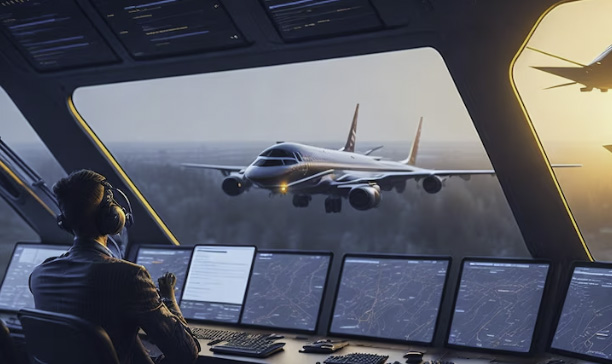
Here are some specific technologies and trends that are likely to shape the future of aerobatics:
Electric aerobatic aircraft:
Electric aerobatic aircraft are powered by electric motors and batteries, rather than traditional gas-powered engines. They offer a number of advantages over gas-powered aerobatic aircraft, including:
- Quieter: Electric aerobatic aircraft are much quieter than gas-powered aerobatic aircraft. This makes them more pleasant to fly and less disruptive to the environment.
- Cleaner: Electric aerobatic aircraft produce zero emissions, making them a more environmentally friendly option than gas-powered aerobatic aircraft.
- More efficient: Electric motors are more efficient than gas-powered engines, meaning that electric aerobatic aircraft can fly longer on a single charge than gas-powered aerobatic aircraft.
- Less maintenance: Electric motors require less maintenance than gas-powered engines, which can save aerobatic pilots time and money.
Electric aerobatic aircraft are also becoming more powerful and capable. In 2021, the Rolls-Royce Spirit of Innovation aircraft became the world’s fastest all-electric aircraft, reaching a speed of 387.44 mph.
Here are some examples of electric aerobatic aircraft that are currently in development or production:
- Diamond eDA40: The Diamond eDA40 is a two-seat electric aerobatic aircraft that is based on the popular DA40 platform. It is powered by a single Siemens electric motor and has a range of up to 120 miles.
- Pipistrel Velis Electro: The Pipistrel Velis Electro is a single-seat electric aerobatic aircraft that is designed for training and competition. It is powered by a single Siemens electric motor and has a range of up to 60 miles.
- Extra 300e: The Extra 300e is an electric version of the popular Extra 300 aerobatic aircraft. It is powered by two Siemens electric motors and has a range of up to 20 minutes.
Electric aerobatic aircraft are still in their early stages of development, but they have the potential to revolutionize the sport of aerobatics. As these aircraft become more powerful, capable, and affordable, we can expect to see more and more aerobatic pilots switching to electric aircraft.
In addition to the advantages listed above, electric aerobatic aircraft also offer a number of other potential benefits, such as:
- Lower operating costs: Electric aircraft are cheaper to operate than gas-powered aircraft, as they do not require fossil fuels.
- Increased safety: Electric aircraft are inherently safer than gas-powered aircraft, as they have fewer moving parts and are less likely to catch fire.
- Reduced noise pollution: Electric aircraft are much quieter than gas-powered aircraft, which can make them more attractive for use in urban areas.
As electric aerobatic aircraft continue to develop, we can expect to see even more amazing and innovative aerobatic performances in the years to come.
Autonomous aerobatic aircraft:
Autonomous aerobatic aircraft are aircraft that can perform complex aerobatic maneuvers without the need for a pilot on board. These aircraft are still in their early stages of development, but they have the potential to revolutionize the sport of aerobatics.
There are a number of advantages to using autonomous aerobatic aircraft. First, they can perform maneuvers that would be too dangerous or difficult for human pilots to perform. Second, they can be used to create new and innovative aerobatic performances that would not be possible with traditional piloted aircraft. Third, autonomous aerobatic aircraft can be used to train aerobatic pilots more safely and efficiently.
There are a number of challenges that need to be addressed before autonomous aerobatic aircraft can become widely used. One challenge is developing reliable and accurate flight control systems. Another challenge is developing software that can safely and effectively plan and execute complex aerobatic maneuvers.
Despite the challenges, there is a lot of progress being made in the development of autonomous aerobatic aircraft. In 2021, the Boeing Loyal Wingman autonomous aircraft successfully performed a series of aerobatic maneuvers, including a loop, a roll, and a split S.
Here are some potential applications for autonomous aerobatic aircraft:
- Aerobatic performances: Autonomous aerobatic aircraft could be used to create new and innovative aerobatic performances that would not be possible with traditional piloted aircraft. For example, autonomous aerobatic aircraft could be used to perform synchronized aerobatics or to fly through complex obstacle courses.
- Aerobatic competitions: Autonomous aerobatic aircraft could be used to create new and exciting aerobatic competitions. For example, autonomous aerobatic aircraft could compete against each other in races or in obstacle courses.
- Aerobatic training: Autonomous aerobatic aircraft could be used to train aerobatic pilots more safely and efficiently. For example, autonomous aerobatic aircraft could be used to simulate dangerous or difficult aerobatic maneuvers in a safe environment.
Autonomous aerobatic aircraft are still in their early stages of development, but they have the potential to revolutionize the sport of aerobatics. As these aircraft become more sophisticated and reliable, we can expect to see them used in a variety of applications, including aerobatic performances, competitions, and training.
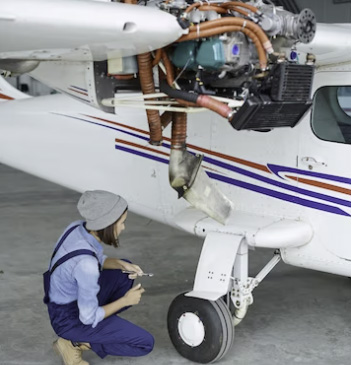
Advanced flight simulation technology:
Advanced flight simulation technology is playing an increasingly important role in aerobatic training and development. Flight simulators can provide pilots with a safe and realistic environment to practice aerobatic maneuvers, learn new skills, and develop new techniques.
Some of the benefits of using advanced flight simulation technology for aerobatic training include:
- Safety: Flight simulators are much safer than training in real aircraft, as there is no risk of accidents or injuries.
- Cost: Flight simulators are much less expensive to operate than real aircraft, which can save pilots money on training costs.
- Accessibility: Flight simulators are more accessible to pilots of all levels of experience, as they can be used to train for a wide variety of aerobatic maneuvers, regardless of the pilot’s budget or location.
- Flexibility: Flight simulators can be used to create custom training scenarios that are tailored to the individual needs of each pilot.
Advanced flight simulation technology is also being used to develop new aerobatic maneuvers and techniques. For example, flight simulators can be used to test the feasibility of new maneuvers before they are attempted in real aircraft. Flight simulators can also be used to develop new aerobatic training programs.
Here are some examples of advanced flight simulation technology that is being used for aerobatic training and development:
- Virtual reality (VR) flight simulators: VR flight simulators provide pilots with a truly immersive experience, allowing them to feel like they are actually flying the aircraft. VR flight simulators are particularly well-suited for aerobatic training, as they allow pilots to experience the high-G forces and spatial disorientation that are associated with aerobatic maneuvers.
- Motion-based flight simulators: Motion-based flight simulators provide pilots with a realistic physical experience of flight. Motion-based flight simulators are particularly well-suited for aerobatic training, as they allow pilots to experience the forces that are acting on the aircraft during aerobatic maneuvers.
- Full-flight simulators: Full-flight simulators are the most sophisticated type of flight simulator. Full-flight simulators are equipped with a full cockpit and provide pilots with the most realistic experience of flying an aircraft. Full-flight simulators are often used for aerobatic training by professional pilots and air forces.
Advanced flight simulation technology is a valuable tool for aerobatic training and development. As this technology continues to evolve, we can expect to see even more innovative and effective ways to train aerobatic pilots.
3D printing technology:
3D printing technology is being used to create custom aircraft parts, including aerobatic aircraft parts. This technology is becoming more sophisticated and affordable, making it possible to create custom parts that are lighter, stronger, and more aerodynamic than traditional parts.
Some of the benefits of using 3D printing technology for aerobatic aircraft parts include:
- Reduced weight: 3D printed parts can be designed to be lighter than traditional parts, which can improve the performance of aerobatic aircraft.
- Increased strength: 3D printed parts can be designed to be stronger than traditional parts, which can improve the safety of aerobatic aircraft.
- Improved aerodynamics: 3D printed parts can be designed with complex shapes that would be difficult or impossible to manufacture using traditional methods. This can improve the aerodynamics of aerobatic aircraft.
- Reduced cost: 3D printing can be used to create custom parts at a relatively low cost, which can make it a more affordable option than traditional manufacturing methods for small batches of parts.
Here are some examples of 3D printed aerobatic aircraft parts:
- Airfoils: 3D printed airfoils can be designed with complex shapes that improve the performance of aerobatic aircraft.
- Ducts: 3D printed ducts can be designed with complex shapes that improve the airflow through aerobatic aircraft.
- Fins: 3D printed fins can be designed with complex shapes that improve the stability and control of aerobatic aircraft.
- Control surfaces: 3D printed control surfaces can be designed with complex shapes that improve the performance of aerobatic aircraft.
3D printing technology is still in its early stages of development for aerobatic aircraft, but it has the potential to revolutionize the way that aerobatic aircraft are designed and manufactured. As 3D printers become more sophisticated and affordable, we can expect to see more and more 3D printed parts used in aerobatic aircraft.
Here are some potential applications for 3D printing technology in aerobatic aircraft:
- Prototyping: 3D printing can be used to quickly and easily prototype new aerobatic aircraft parts. This can help designers to test new ideas and to identify any potential problems before the parts are manufactured using traditional methods.
- Production: 3D printing can be used to produce custom aerobatic aircraft parts on a small scale. This can be useful for creating parts for one-off aircraft or for small batches of aircraft.
- Repair: 3D printing can be used to repair damaged aerobatic aircraft parts. This can be a more cost-effective and efficient way to repair parts than replacing them.
3D printing technology is a valuable tool for the design, manufacture, and repair of aerobatic aircraft parts. As this technology continues to evolve, we can expect to see even more innovative and effective ways to use 3D printing in aerobatics.
Artificial intelligence (AI):
Artificial intelligence (AI) is being used to develop new aerobatic aircraft and to train aerobatic pilots. AI can be used to:
- Design new aerobatic aircraft: AI can be used to design new aerobatic aircraft that are more aerodynamic, lighter, and stronger than traditional aircraft. AI can also be used to design new aerobatic aircraft that are capable of performing more complex and challenging maneuvers.
- Train aerobatic pilots: AI can be used to develop new and innovative aerobatic training programs. AI can also be used to create custom training programs that are tailored to the individual needs of each pilot.
- Assist aerobatic pilots during flight: AI can be used to assist aerobatic pilots during flight by providing them with real-time information about the aircraft’s performance and the surrounding environment. AI can also be used to help aerobatic pilots to avoid hazards and to perform maneuvers more safely and efficiently.
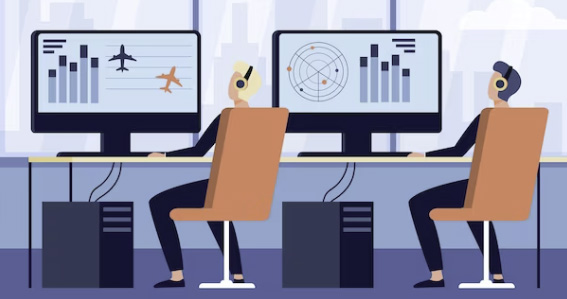
Here are some specific examples of how AI is being used in aerobatics:
- AI-powered aerobatic flight simulators: AI-powered aerobatic flight simulators can provide pilots with a more realistic and challenging training experience. AI can be used to create custom training scenarios that are tailored to the individual needs of each pilot.
- AI-assisted aerobatic training programs: AI-assisted aerobatic training programs can help pilots to learn new maneuvers and to improve their skills more quickly. AI can be used to provide pilots with real-time feedback on their performance and to suggest areas where they can improve.
- AI-powered aerobatic flight control systems: AI-powered aerobatic flight control systems can help pilots to perform maneuvers more safely and efficiently. AI can be used to anticipate the pilot’s inputs and to automatically adjust the aircraft’s controls to execute the maneuver perfectly.
AI is still in its early stages of development for aerobatics, but it has the potential to revolutionize the way that aerobatic aircraft are designed, trained, and flown. As AI continues to evolve, we can expect to see even more innovative and effective ways to use AI in aerobatics.
Here are some potential future applications for AI in aerobatics:
- Autonomous aerobatic aircraft: AI could be used to develop autonomous aerobatic aircraft that are capable of performing complex aerobatic maneuvers without the need for a pilot on board. This could open up new possibilities for aerobatic performances and competitions.
- AI-powered aerobatic safety systems: AI could be used to develop new aerobatic safety systems that can help to prevent accidents. For example, AI could be used to monitor the aircraft’s performance and to warn the pilot of any potential problems.
- AI-powered aerobatic performance analysis: AI could be used to analyze the performance of aerobatic pilots and to provide them with feedback on how they can improve. This could help aerobatic pilots to reach their full potential.
AI has the potential to make aerobatics safer, more efficient, and more accessible to everyone. As AI continues to develop, we can expect to see even more amazing and innovative aerobatic performances in the years to come.
These are just a few of the technologies and trends that are likely to shape the future of aerobatics. As these technologies continue to develop, we can expect to see even more amazing and innovative aerobatic performances in the years to come.
